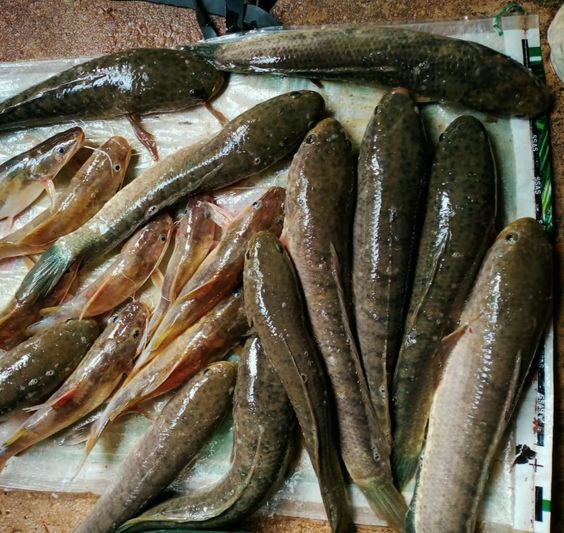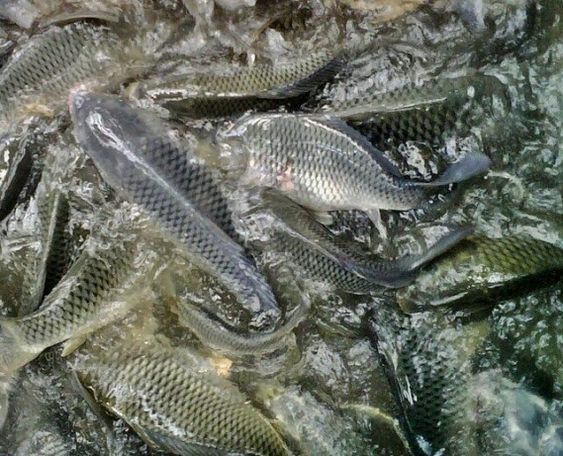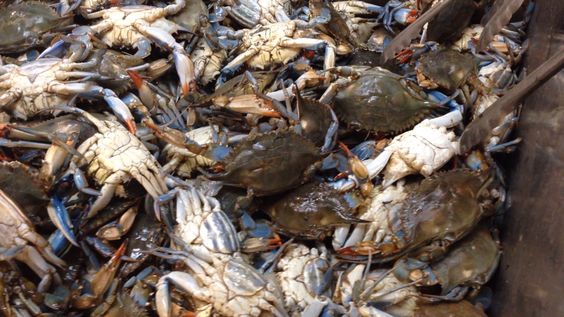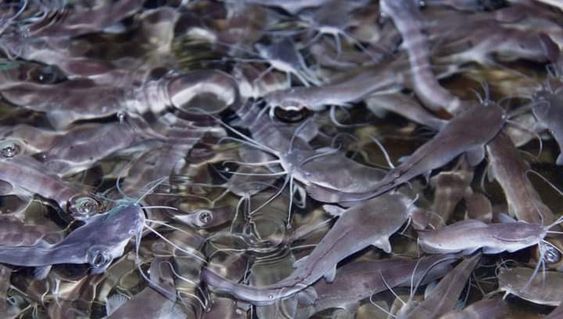Small Snakehead Fish: A Comprehensive Guide
Small Snakehead Fish,The term “small snakehead fish” can encompass a variety of species within the Channidae family, known for their elongated bodies and aggressive feeding behaviors. While some snakehead species can grow quite large, this article focuses specifically on the smaller varieties, typically reaching lengths between 6 and 15 inches.
Contents
Small Snakehead Fish
Small snakeheads have become increasingly popular in the aquarium trade due to their unique appearance and relatively manageable size compared to their larger cousins. However, it’s crucial to understand their specific needs and potential drawbacks before considering them for your home aquarium.
This comprehensive guide delves into the fascinating world of small snakehead fish, exploring their:
- Biology and Diversity: We’ll delve into the anatomical characteristics, natural habitats, and various species that fall under the “small snakehead” category.
- Care Requirements: Discover the essential elements for creating a thriving aquatic environment for your small snakehead, including tank setup, water parameters, filtration, and feeding strategies.
- Behavior and Compatibility: Explore the social interactions, territoriality, and ideal tank mates for small snakehead fish.
- Breeding: If you’re interested in propagating these fascinating fish, we’ll discuss breeding techniques and considerations.
- Potential Concerns: We’ll address the potential environmental risks associated with some snakehead species and responsible ownership practices.
This guide aims to provide both novice and experienced aquarists with the necessary knowledge to make informed decisions about keeping small snakehead fish.
Benefits of Keeping Small Snakehead Fish
- Unique Appearance: Small snakeheads possess an elongated body shape, large mouths with prominent teeth, and often vibrant color patterns, making them visually captivating additions to an aquarium.
- Hardy and Adaptable: Many small snakehead species demonstrate a surprising degree of tolerance for varying water conditions, making them suitable for beginner aquarists with proper research.
- Active and Predatory: Their active hunting behavior can be entertaining to observe, adding a dynamic element to your aquarium.
- Relatively Manageable Size: Compared to their larger counterparts, small snakeheads offer a more practical option for aquarists with limited space.
Objectives of This Guide
This guide strives to achieve the following objectives:
- Provide a thorough understanding: Equip you with a comprehensive understanding of small snakehead fish biology, behavior, and care requirements.
- Promote responsible ownership: Encourage responsible ownership practices to minimize any potential environmental or ecological concerns.
- Offer practical guidance: Equip you with the knowledge and tools to successfully establish and maintain a thriving environment for your small snakeheads.
- Highlight potential challenges: Address potential challenges associated with small snakehead care and offer solutions for overcoming them.
Important Note: Local regulations regarding ownership of specific snakehead species may vary. Always research and comply with any local restrictions before acquiring a small snakehead fish.
Ideas and Suggestions for Keeping Small Snakehead Fish
Tank Setup:
- Minimum tank size: Aim for a minimum tank size of 30 gallons for most small snakehead species. Larger tanks are recommended if housing multiple fish.
- Substrate: Opt for a sand or gravel substrate that allows for easy burrowing and digging, a natural behavior for some snakeheads.
- Decorations: Provide hiding places with rocks, driftwood, and live plants to cater to their semi-aggressive nature.
- Filtration: Ensure a robust filtration system to maintain pristine water quality, crucial for snakehead health.
Water Parameters:
- Temperature: Maintain the water temperature within a range of 72°F to 82°F (22°C to 28°C).
- pH: Strive for a slightly acidic to neutral pH level, ranging from 6.5 to 7.5.
- Water Hardness: Moderately hard water is generally preferred, but some species can tolerate softer water conditions.
- Feeding: Small snakeheads are primarily carnivorous. Offer a varied diet of live or frozen foods like bloodworms, brine shrimp, insects, and small feeder fish.
- Compatibility: Snakeheads are generally not recommended for community tanks due to their predatory nature. Consider housing them with similarly sized, semi-aggressive tank mates.
- Advantages and Considerations
Advantages:
- Hardy and adaptable: Many small snakehead species thrive in a range of water conditions, making them suitable for beginner aquarists with proper research.
- Relatively manageable size: These fish offer a practical option for aquarists with limited space compared to their larger counterparts.
- Active and engaging: Their active hunting behavior can be entertaining to observe in your home aquarium.
Behavior and Compatibility
Small snakeheads, while fascinating creatures, possess a semi-aggressive nature. They can be territorial and exhibit dominance over tank mates. Here’s a closer look at their behavior and tank compatibility:
- Social Interaction: While not inherently social, small snakeheads can tolerate tank mates of similar size and temperament. However, introducing new tank mates can be stressful and may lead to aggression.
- Territoriality: These fish establish territories within the aquarium and may become aggressive towards tank mates venturing into their claimed space. Providing ample hiding places and visual barriers can help mitigate territorial disputes.
- Predatory Behavior: Small snakeheads are primarily carnivorous and will readily consume any fish small enough to fit in their mouths. This makes them unsuitable for community tanks with smaller fish species like tetras or guppies.
Ideal Tank Mates:
Choosing compatible tank mates for small snakeheads requires careful consideration. Here are some potential options:
- Larger Loaches: Species like Clown Loaches or Yo-Yo Loaches can hold their own against a small snakehead.
- Large Catfish: Bristlenose Plecos or Synodontis Catfish can coexist peacefully with snakeheads due to their bottom-dwelling nature.
- Other Semi-Aggressive Fish: Species like Cichlids or Archerfish can handle their own in terms of temperament.
Breeding Small Snakehead Fish
If you’re interested in breeding small snakeheads, it’s important to understand their breeding behavior and requirements.
- Breeding Triggers: Simulating the wet season with slightly warmer water temperatures and increased rainfall can trigger breeding behavior.
- Spawning: Snakeheads are typically egg-scatterers. They lay their eggs on floating plants or submerged structures.
- Parental Care: Unlike many fish, some snakehead species exhibit parental care. The male snakehead guards the eggs and fry after hatching.
- Raising Fry: Feeding newly hatched fry infusoria or baby brine shrimp is crucial for their survival.
Important Note: Breeding snakeheads requires a dedicated breeding tank and careful management of fry. Researching the specific breeding requirements of your chosen species is essential.
Potential Concerns and Responsible Ownership
While captivating fish, small snakeheads have potential drawbacks to consider:
- Jumping: Snakeheads possess an amphibious nature and can jump out of open tanks. Secure tank lids are crucial to prevent escapes.
- Environmental Risks: Some snakehead species are considered invasive due to their aggressive nature and ability to survive in various environments. Research your local regulations and never release unwanted snakeheads into the wild.
Responsible Ownership Practices:
- Research: Before acquiring a small snakehead, research the specific needs of your chosen species and ensure you can provide a suitable environment.
- Proper Tank Size: Never house your snakehead in a tank that is too small. Provide ample space for them to swim and establish territories.
- Compatible Tank Mates: Choose tank mates that can coexist with your snakehead’s semi-aggressive nature.
- Secure Tank: Ensure your tank has a secure lid to prevent escapes.
- Never Release: Never release unwanted snakeheads into the wild. Find them a new home or surrender them to a responsible pet store or aquarium facility.
By following responsible ownership practices, you can create a thriving environment for your small snakehead fish while minimizing any potential environmental risks.






